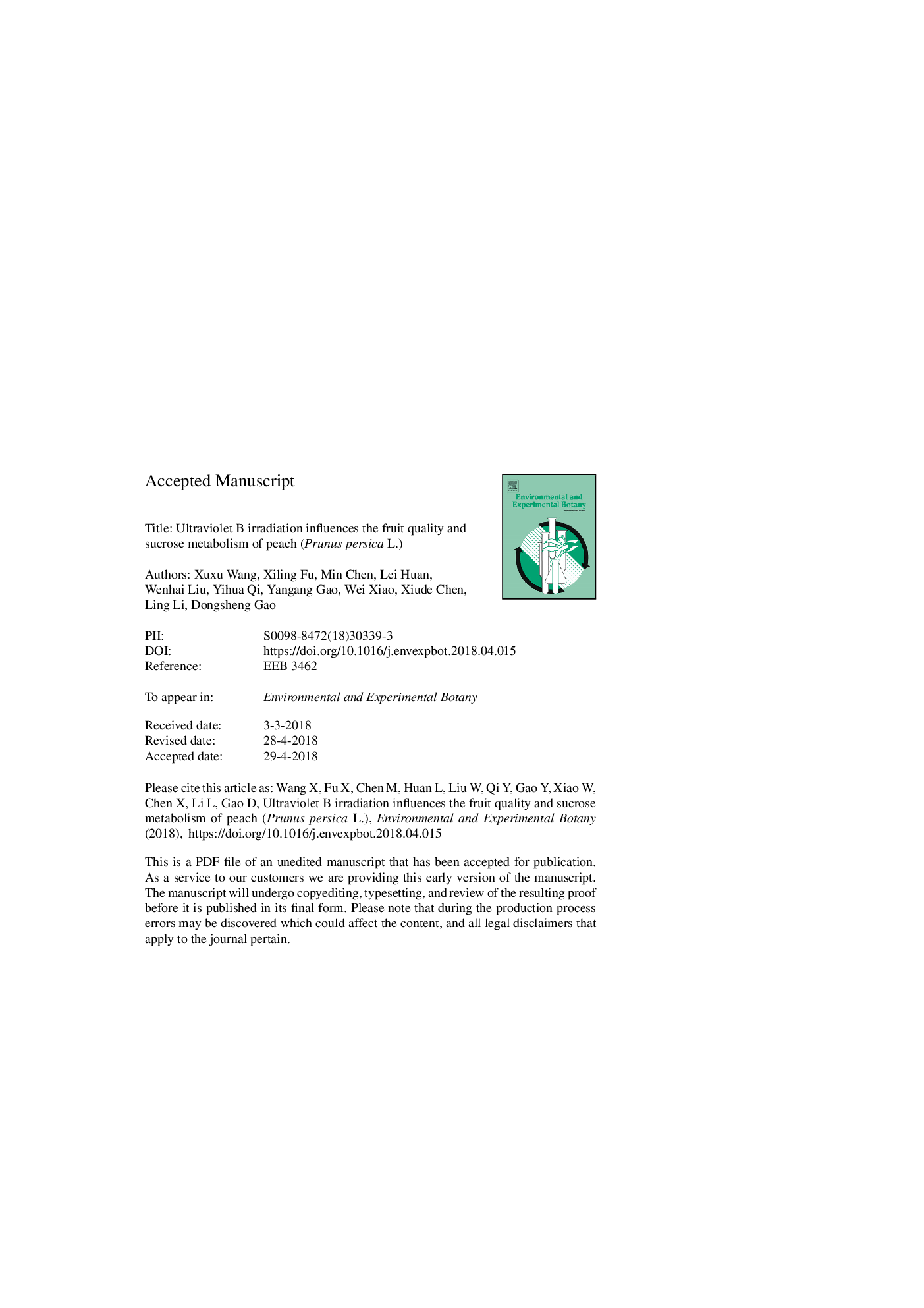| Article ID | Journal | Published Year | Pages | File Type |
|---|---|---|---|---|
| 8886871 | Environmental and Experimental Botany | 2018 | 40 Pages |
Abstract
Recently, the consumption of greenhouse-grown peaches has declined because of their poor flavor, which makes them unappealing to consumers. In this study, an optimum intensity of 1.44â¯kJ·mâ2·dâ1 of ultraviolet B (UV-B) radiation increased the sugar accumulation and the total soluble solid/total acidity in 'Tainongtianmi' fruit. In the Lumi 1 peach tree variety, 1.44â¯kJ·mâ2·dâ1 of UV-B radiation increased the anthocyanin contents twofold in fruit compared with the control. Additionally, the sucrose level increased before the second fruit-expansion stage, while it tended to decrease after the slow-growth period in 'Lumi 1' peach trees. The fundamental mechanism in response to the increased sucrose level prior to the second fruit-expansion stage was the increased transport of sucrose to fruit caused by an enhanced tonoplastic monosaccharide transporter function in leaves. The sorbitol content increased in mature fruit owing to the slight increase in sorbitol transporter activity in leaves. Our study indicates that exposure to 1.44â¯kJ·mâ2·dâ1 UV-B radiation before the second fruit-expansion period can transiently increase the sucrose and total sugar contents of peach, while prolonged irradiation with UV-B inhibited the accumulation of sugars.
Related Topics
Life Sciences
Agricultural and Biological Sciences
Ecology, Evolution, Behavior and Systematics
Authors
Xuxu Wang, Xiling Fu, Min Chen, Lei Huan, Wenhai Liu, Yihua Qi, Yangang Gao, Wei Xiao, Xiude Chen, Ling Li, Dongsheng Gao,
